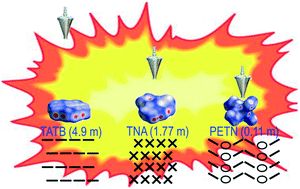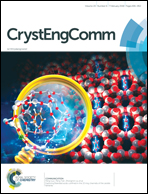Relationship between the crystal packing and impact sensitivity of energetic materials
Abstract
The crystal packing structure–safety (usually represented by sensitivity) relationships of energetic materials (EMs) are requisite to set a basis for tailoring new ones with the desired safety by means of crystal engineering, because safety is one of the two most important properties of EMs for which there is always a high concern. Nevertheless, there is still no such relationship. This work proposes a straightforward and qualitative relationship between the packing structures and impact sensitivity of EMs, covering conventional EMs, energetic co-crystals, energetic solvates, and energetic ionic salts. Meanwhile, we propose a straightforward method to quickly identify the packing mode by the shape of the Hirshfeld surface and the distribution of the red dots on the surface of the molecule involved in an energetic crystal. As a result, we find that an EM with a packing structure of ready shear sliding tends to possess a low impact sensitivity, in combination with a high molecular stability. That is, a perfect face-to-face π-stacking, constructed by big π-bonded molecules together with strong intra- and intermolecular hydrogen bonding, is preferred to impact insensitive EMs; moreover, if the intermolecular interactions and their anisotropy in an energetic crystal are enhanced, its impact sensitivity is expected to be improved too. Hopefully, the proposed relationship will facilitate understanding of the sensitivity mechanism of existing EMs, and will contribute to set a basis for guiding new EM constructions by molecular and crystal designs.



 Please wait while we load your content...
Please wait while we load your content...